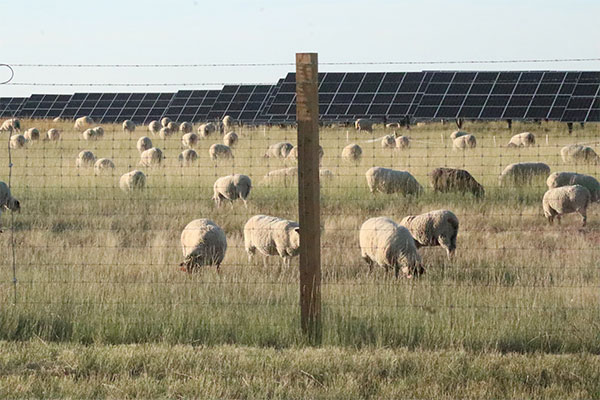- Alberta has paused new large solar and wind projects until 2024, reflecting widespread concerns over their impact on prime agricultural land.
- Studies show that less than 1% of Alberta's farmland would be needed for solar energy to meet net-zero emissions targets.
- Innovative methods like agrovoltaics are emerging, demonstrating that renewable energy and agriculture can coexist harmoniously.
In Canada, particularly in Alberta, there is growing concern about the impact of large solar farms on agricultural productivity.
The province, historically, has been reliant on coal for electricity but now renewable energy development had been growing rapidly. Renewable sources, including wind and solar, have risen to generate almost 20% of it’s electricity.
A Moratorium
The current United Conservative Party government responded to this growth by placing a moratorium on new large wind and solar projects until February 29, 2024, to address concerns about land use and its effects on agriculture and recreation.
Announced on August 3, the pause mandated by the Alberta government aims to evaluate the impacts of renewable energy projects on agricultural land, viewscapes, and the overall power grid. This includes assessing the requirements for post-project cleanup and potential projects on Crown land.
Impact on Agricultural Land
Premier Danielle Smith has stressed the importance of not using prime agricultural land for extensive solar panels. Rural municipal politicians share this concern in Alberta and federal critics.
Sara Hastings-Simon, an energy transition and public policy expert at the University of Calgary, highlights the need to balance clean energy growth with preserving rural landscapes.
Hastings-Simon’s research shows that to meet federal net-zero emissions targets by 2035, Alberta must increase solar capacity from 1.3 GW to 5.2 GW by 2041, using less than 0.1% of its agricultural land. Ian Urquhart, a political science professor at the University of Alberta, found that most approved solar projects in Alberta between 2019 and 2023 were on land unsuitable for crops.
Innovative Solutions and Future Prospects
For instance, the Creekside Solar Project in Leduc will use 127 acres of high-quality agricultural land, but this is just 0.03% of the country’s prime farmland. Innovative approaches like solar grazing and agrovoltaics demonstrate how solar farms and agriculture coexist.
A study by Keena Trowell from McMaster University estimated that covering 5.6% of Canada’s agricultural land with solar panels could meet its energy needs. Trowell suggests repurposing non-agricultural land for solar projects like brownfields and former oil and gas sites.
Alberta’s Renewable Energy Sector and Challenges
Alberta remains a leader in Canada’s renewable energy sector, with significant investments and a large share of the country’s wind and solar projects. However, the recent moratorium on new projects due to concerns about grid stability and land use has posed challenges.
Despite concerns, most solar projects in Alberta are on less fertile farmland. Alberta’s fully developed solar industry would need less than 1% of its agricultural land. The debate over solar farms and land use in Canada requires a balanced approach, considering innovative practices and non-agricultural land use. As Canada approaches renewable energy, strategic planning will be key to a sustainable future.
Alberta’s case shows there is ample suitable land available.














Comments